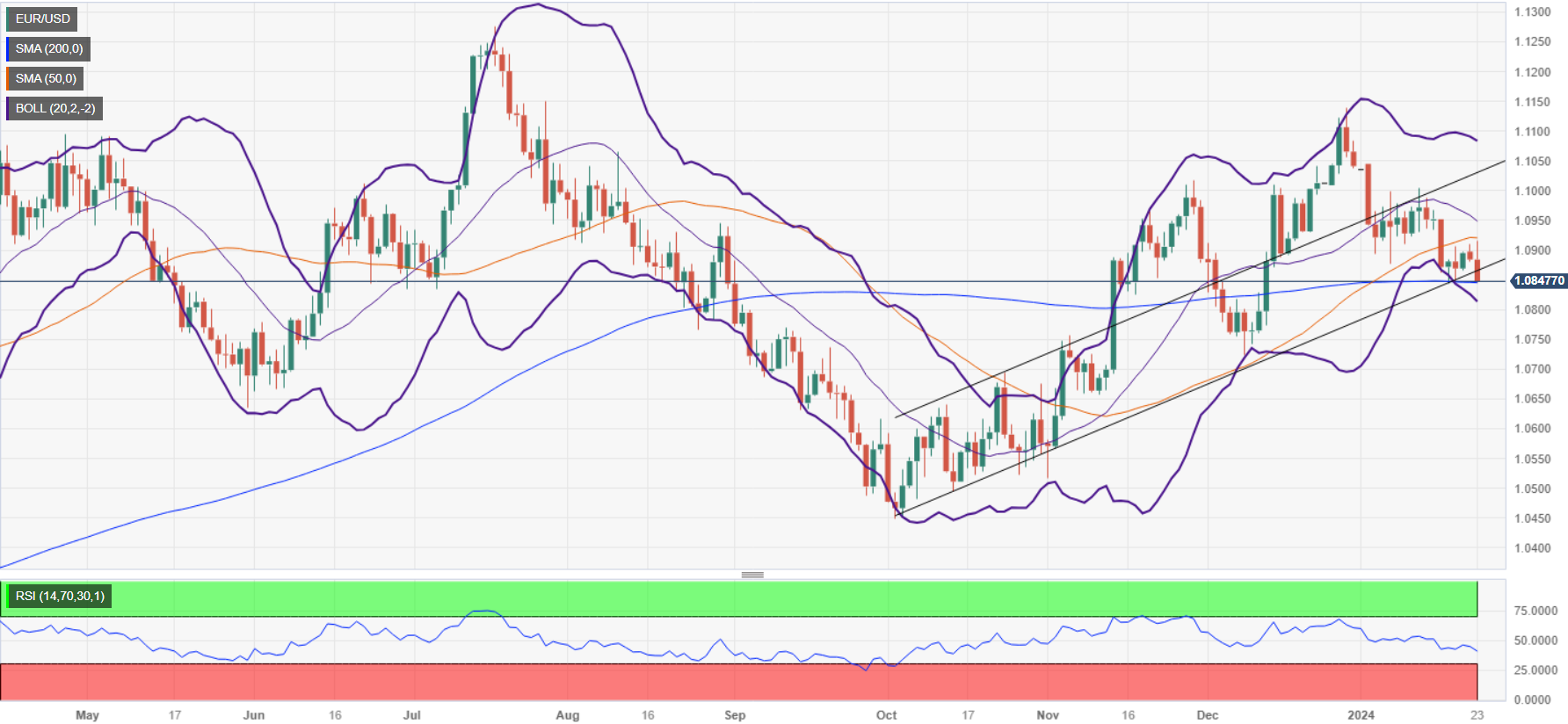EUR/USD dips further below 1.0850 ahead of ECB’s decision, US data
- EUR/USD drops 0.12% in North American trade, to 1.0855 after rallying to 1.0915, swayed by Fed policy outlook.
- Positive Wall Street sentiment vs. Eurozone confidence drop and ECB's tighter credit affect EUR/USD.
- Upcoming ECB policy decision, US GDP estimate set to shape EUR/USD amidst inflationary pressures.
The EUR/USD dropped some 0.12% in early trading during the North American session amid an upbeat market mood. At the same time, traders adjusted their speculations on rate cuts by the US Federal Reserve (Fed). The pair traded at 1.0855 after hitting a daily high of 1.0915 in the European session.
EUR/USD traders are awaiting the ECB’s Lagarde and Co. decision on Thursday
Wall Street’s sentiment reflects optimism amongst investors, who seem confident that the US economy will avoid a recession. In the meantime, odds that the Fed would cut rates in March plunged from 63.1% a week ago to 38.6%, following last week’s Fed officials declaring that it’s too soon to ease policy.
Aside from this, the European Central Bank (ECB) Bank Lending Survey revealed that credit has tightened while demand for loans diminished, taking a hit from higher interest rates set by the ECB. According to the ECB's survey, banks expect a slight increase in demand for loans to companies and mortgages.
Data-wise, the Eurozone (EU) Consumer Confidence dropped from 15.0 in December to -16.0 in January, revealing the EU’s commission, missing estimates for a rise to -14.3. Further catalysts are expected to rock the boat as the ECB would announce its monetary policy decision on Thursday. Across the pond, the US economic docket will announce the 2023 Q4 Gross Domestic Product (GDP) preliminary estimate, along with the Fed’s preferred gauge for inflation, the Personal Consumption Expenditures (PCE).
EUR/USD Price Analysis: Technical outlook
Even though the EUR/USD is resuming its downtrend, sellers would face stirring support at the 200-day moving average (DMA) at 1.0844. Once cleared, further downside is seen at the 1.0800 figure, followed by the 100-DMA at 1.0771. On the other hand, if buyers lift the major to the 1.0900 handle, expect a challenge of the 50-DMA at 1.0920, before buyers could extend the recovery towards he January 16 high at 1.0951.


